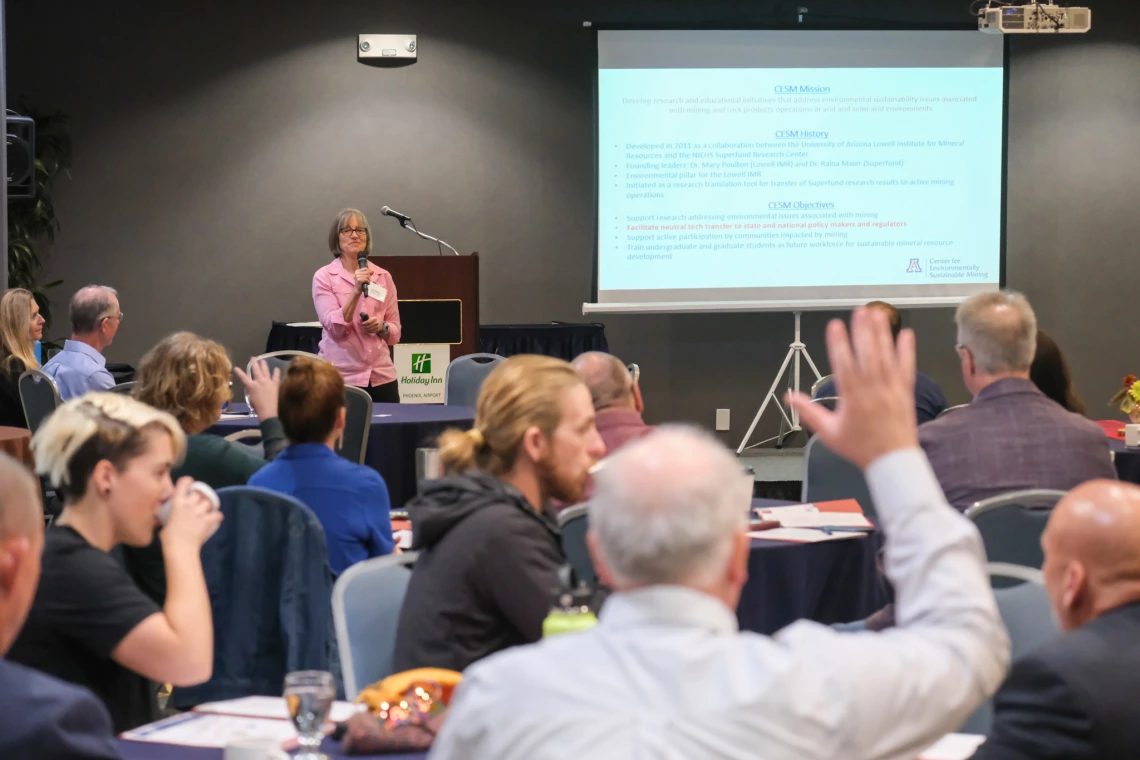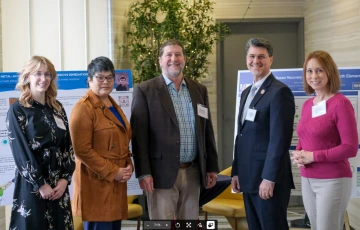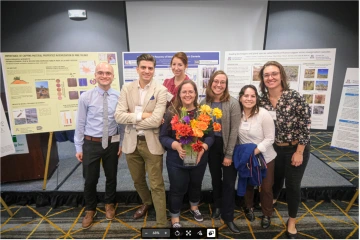CESM and UA SRC Host an Applied Industry Research & Information Sharing Forum

The UA Center for Environmentally Sustainable Mining (CESM) in collaboration with the University of Arizona Superfund Research Center (UA SRC) team, hosted a conference with government officials, state regulators and industry representatives in Phoenix, Ariz. on November 3, 2022. The conference was titled “UArizona’s Center for Environmentally Sustainable Mining: Applied Industry Research & Information Sharing Forum.”
CESM grew out of the UA SRC because of the recognized need to translate academic findings on mine tailings remediation to the mining industry, consulting firm stakeholders, and regulatory agencies.
Directed by Environmental Science associate research professor, Dr. Julie Neilson, CESM leverages industry support to develop research and educational initiatives to enhance the sustainability of mining. The CESM organizing committee included co-director Dr. Alicja Babst-Kostecka, deputy director Dr. Raina Maier, Dr. Mónica Ramírez-Andreotta and Bethany Obernesser.

Bethany Obernesser (CESM) with ADEQ officials at the forum including ADEQ Director Misael Cabrebra and Erin Jordan, Surface Water Quality Improvement Manager
The primary objective of the CESM conference was to inform government agencies and policy makers of CESM industry-academic collaborative research efforts focused on mining sustainability, and to discuss how we as a diverse group of academics, industry partners, and government agencies can collaborate to accelerate the development of sustainable mining technologies. This first CESM conference saw over 60 attendees representing major hardrock (metal) and rock products (cement, sand and gravel) mining, the U.S. Bureau of Land Management, the U.S. Forest Service, Salt River Project utility, the Arizona State Mine Inspector, Arizona Department of Environmental Quality, related companies, and consultants, as well as CESM and UA SRC personnel and Trainees. Participants were enthusiastic about the rare opportunity to assemble industry and regulatory agency stakeholders together to discuss mining sustainability issues. It was agreed that CESM facilitated the positive interaction of these two stakeholder groups by providing a neutral platform for knowledge transfer. One hundred percent of those responding to a post-conference survey requested that the forum be instituted as an annual event focused on the sustainability of mining. Workshops were also requested on a diversity of sustainability topics. .
A secondary goal was to explore opportunities to expand the CESM collaborative Industry-Academic Revegetation Research Cooperative to other areas. Primary interest was expressed in a few additional research topics including phytoextraction of metals from mine waste using plants, facilitating the recovery of strategic metals from mining waste streams, and novel approaches to dust suppression at mine and hardrock sites.
“Research is needed to provide the mining industry with improved management practices and more effective reclamation tools to reduce the impact of mining, improve mine-waste containment, and return sites to self-sustaining ecosystems following mine closure,” Neilson said.

Students attending the CESM Research Forum in Phoenix. Graduate students Sierra Lauman (CESM), Jessica Ledesma (Superfund), Annie McCawley (Superfund), Kamila Murawska-Wlodarczyk (Superfund) and Tomasz Wlodarczyk (CESM) presented posters at the event.
The Research forum also provided an excellent opportunity for our undergraduate and graduate students. “Our students had a unique opportunity to interact with and communicate their research findings to both mining industry leaders and regulators,” Babst-Kostecka said. “This broadened their professional horizons, exemplified career perspectives, and reinforced their confidence that the excellent work that they are doing on a daily basis has applied relevance for communities and societies in Arizona.”
To learn more, visit the UArizona's CESM guides state mining industry, regulators with sustainability research.

